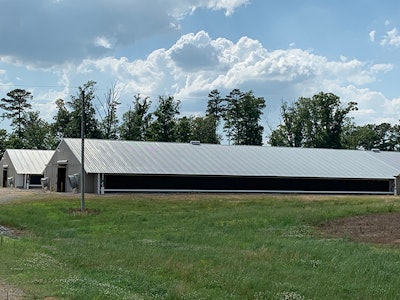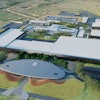
Geothermal heating, ventilation and air conditioning (HVAC) systems could help the poultry industry combat skyrocketing energy costs and rising prices caused by inflation.
Combining solar energy with conventional heat pumps
In Cullman, Alabama, a 2019 demonstration project conducted by Tyson Foods, Auburn University College of Agriculture and Southern Solar Systems aimed to create a poultry house that used solar power as the primary energy source.
“Part of that project was to figure out how to capture some value in what would otherwise be waste solar when we weren’t able to use it directly in the poultry houses. So, we were looking at how to convert some of that,” said Dennis Brothers, associate extension professor, Department of Agricultural Economics and Rural Sociology, Auburn University.
“The idea of a heat exchanger has been a hot topic in poultry for many years, but in my experience, most of them have been less than ideal because you’re trying to exchange dirty, wet ammonia-laden poultry house air,” Brothers added.
Instead of exchanging air from inside the house, the heat pumps utilize air from outside the poultry house, which helps solve this issue.
Over the first two years of the project, the poultry house with the heat pump-solar combination consumed 26% less natural gas compared to the control house, which helped lead to an improved bird environment with increased ventilation. Anecdotally, the house also often exhibited lower humidity, a benefit to poultry welfare.
“From this demonstration, we were able to see where efficiencies could be gained, what a future full-scale system could look like, as well as learned a great deal about how the supplemental heat pump systems might be optimized – leading to Southern Solar System’s pursuit of projects with geothermal heat pumps, as well as hopefully demonstrating a full scale solar/heat pump farm in the near future,” he explained.
Enter geothermal
Unlike conventional heat pumps, where heat is exchanged from the air, geothermal heat pumps extract heat from constant temperature ground water and transfers it to air, which is then passed into the house through traditional fresh air inlets. These systems can also cool by pulling heat from the air and transferring into the much cooler ground water.
Due to the success and lessons learned from the initial trial in Alabama, the decision was made to install a geothermal HVAC system at a poultry farm in Missouri. This was possible, in part, because of Missouri’s high-water table, which enabled a heat pump installation fueled by close access ground water. This system provided the desired temperature in the poultry house, even for day old birds.
“There are a large number of poultry farms around the country that have a water source readily available so that gives us the added efficiency that’s routinely available from a geothermal heat pump versus a standard air source,” Larry Bradford, president, Southern Solar Systems, added.


















